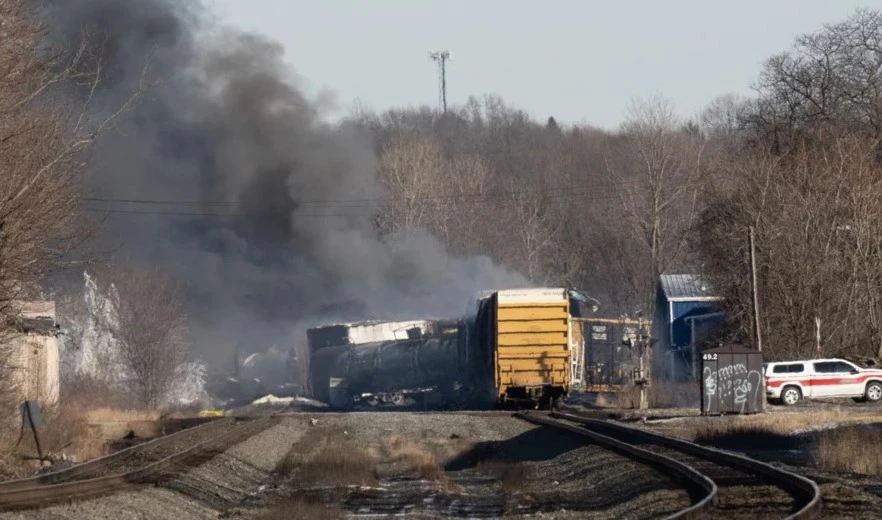Ohio residents diagnosed with bronchitis from chemical exposure
Residents living near the Ohio train derailment area have complained about a variety of ailments in the weeks since the accident and are concerned about long-term health repercussions.
-

The Norfolk Southern freight train that derailed in East Palestine, Ohio, still on fire at midday on Feb. 4 (AP)
The incident of a Norfolk Southern train in East Palestine, Ohio, that spilled poisonous chemicals and resulted in a controlled burn of the substances, has affected the lives of about 4,750 residents.
Residents have complained about a variety of ailments in the weeks since the accident, which occurred on Feb. 3, and are concerned about long-term health repercussions.
Residents affirmed suffering from recent health effects, such as headaches, burning skin, and irritated eyes, amid fears of long-term health hazards such as cancer, despite repeated assurances that the air and water are safe.
After seeing the deaths of animals and local wildlife, residents are concerned about their own health.
Healthcare providers in East Palestine, Ohio, and adjacent areas have noticed a pattern of concerning symptoms. They include what they believe is a sort of chemical bronchitis (also known as industrial bronchitis), which is an inflammation of the lining of the bronchial tubes that convey air to and from the lungs caused by continuous exposure to chemical fumes, acids, or dust.
Employees at QUICKmed Urgent Care, a walk-in clinic in Columbiana, Ohio, claimed that patients have been complaining of a burning feeling when breathing, unexplained rashes, and general weariness.
Several patients claim that if they stay at home for an extended amount of time, their symptoms worsen.
"This could be a lot of things, but if you’re leaving your house and [symptoms] improve, and you go back and it comes back, I’m not thinking that’s allergies or not thinking it’s cold. I think it’s related to that stuff you’re inhaling there," QUICKmed family doctor Deborah Weese said.
Ohio Senators Sherrod Brown and J.D. Vance issued a joint statement Monday requesting "baseline" health testing services for individuals affected by the February 3 disaster and the subsequent "managed burn-off" of cancer-causing chemicals, including vinyl chloride.
Last week, the Ohio Department of Natural Resources calculated that over 43,000 creatures in and around the neighborhood had died since the derailment, most of them fish, crayfish, and frogs.
Local and federal officials, as well as the rail business, insist that the situation is safe.
Read more: Your mess to clean up: Biden to Ohio rail operator

 3 Min Read
3 Min Read










